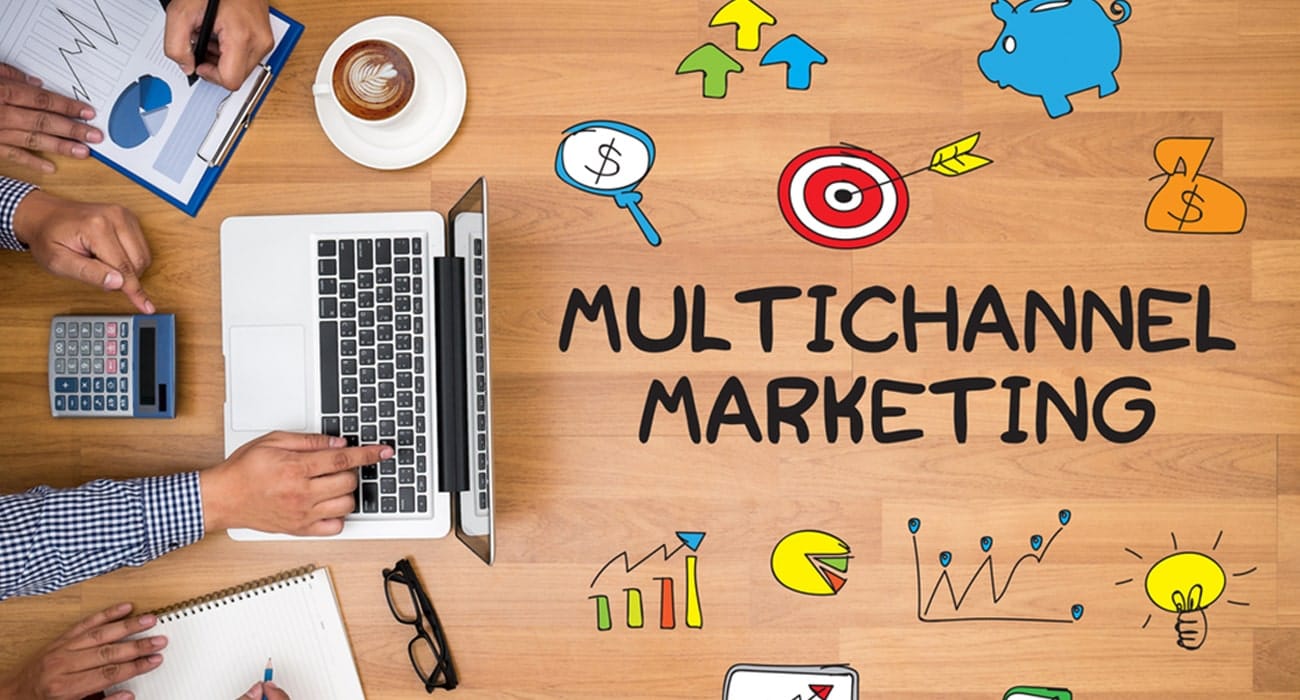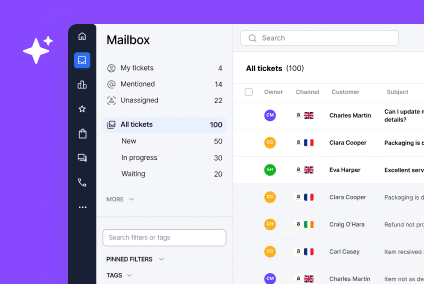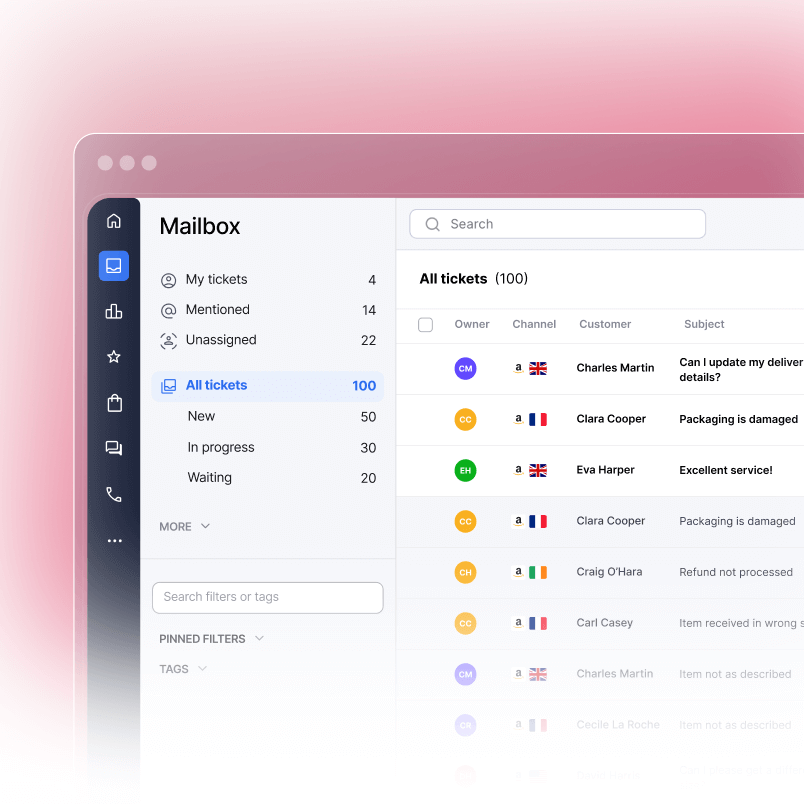The days of shopping in your local store are gone. Today people can browse deals on their phone while watching tv or check social media deals on their commute, and compare and contrast hundreds of brands across the globe.
Purchase journeys have become fragmented and complex. If you want to capture these shopper’s attention, you have to understand how to master multi-channel marketing.
What is Multi-Channel Marketing?
Multi-channel marketing is a process to ensure your campaign is seen is as many places as possible. You roll out the same campaign across the primary channels your users prefer, including (but not limited to) email, SEO, paid acquisition, your website, trade shows/exhibitions, or even word of mouth.
The goal of multi-channel marketing is to stay top of the user’s mind by delivering your message across the channels they spend most time on. .
But to really excel at this, you have to understand the modern consumer’s behavior first.
Modern Consumer Behavior Is Changing Digital Sales
Convenience used to revolve around a store’s distance from you.
Today, convenience is scrolling through product ranges on your phone whilst sat on the bus. It’s streaming Netflix on the TV at the same time you do the grocery shop on your laptop.
But more than that, it’s about ensuring the bus browse leads seamlessly into the couch checkout.
When optimizing the digital purchase journey, you’ve got to consider the various touch-points needed to make a sale, the devices used and the channels that best suit them.
Most purchase journeys require more than a single contact. In fact, 86% of users require at least 2 touch-points with your brand before they’ll click the big checkout button.

Those two touchpoints are often hours or days apart and across completely different devices.
The concept isn’t anything new.
When smartphone use was on the rise we saw a trend of people beginning their purchase journey on mobile, but completing it at a later date on desktop.
It had to be that way because the checkout experience on mobile was awful.
However, as smartphones, payment solutions, and customer service options like chatbots have developed, mobile is now the top performer for both starting and ending purchase journeys.

But it’s not the only device people use. In fact, according to Monetate 50% of all multi-device journeys last at least six sessions and 14 days.
What I’m trying to say is that mobile should be your first focus, however, you shouldn’t be neglecting other channels as your users are still going to be using them.
The problem is, optimizing for multi-channel journeys is no easy feat. So why put so much time and effort into optimizing these journeys if you’re already doing well?
Why Multi-Channel Marketing Is Important for Your Brand
Multi-channel marketing is important because it’s what your customers want.
They’re not limiting themselves to one channel or device, so neither should you. But don’t worry, it’s definitely worth your time.
According to Monetate, multi-channel campaigns lead to both higher AoV and a higher conversion rate.

There’s also a host of other benefits to implementing a multi-channel marketing strategy including increased reach, better brand recognition, and even a boost to credibility.

In short, multi-channel marketing is both what your customers want to experience, and a great boon to your business.
If you’re not already implementing a multi-channel strategy, now is the time to start.
To help you get off to the best start, here’s a few tips on excelling across the channels your customers use.
Key Challenges You’ll Face (And How to Overcome Them)
Understand your Customer’s Multi-Channel Journey
The multi-channel experience is completely different for every single brand. You have to look at your customers interaction, your products, and how you can reduce the gap between the two.
Take this example from Nike as a guide. To promote the Nike Air Jordan’s III they turned offline engagement into online sales.
They knew the key market are massive basketball fans and would likely be heavy social media users.
They placed exclusive Snapchat codes around the after party for the NBA All-Star game which, when scanned, opened Snapchat giving users the chance to purchase the shoes.

It turned in real life advertising into sales through a social channel, and it helped the initial pre-release of the shoe to sell out in 23 minutes.
The key was understanding the market and the channels they’d use. They knew fans would be at the All-Star game and that they’d have Snapchat.
All they did was link the two.
You have to do the same.
Think about your product and the channels your audience would favor.
Then see what you can do to link the channels with your product.
Preferred Channels and Favored Devices
I the above, Snapchat was the perfect way to take the offline experience to an online store. An email exchange, on-site popup, or anything else simply wouldn’t have worked.
You’ve got to pick the right channel based on your customer’s device and stage in the customer journey.
One of the biggest needs of customers nowadays is the need for an immediate response. You have just a few minutes to get back to your customers for the best chance of securing the sale.
Live chat is great for when the user is on site. It’s the perfect medium for increasingly popular mobile devices as we’re used to chatting with friends and family on them.
But, for follow up messages after the sale (like up-sells, receipts, etc) live chat simply isn’t the right channel.
That’s when you’ve got to switch from a service like eDesk to something that can send the relevant email.
When looking at your multi-channel campaigns, don’t just analyze what would make sense in terms of progression through the purchase journey, but look at the devices users are favoring and the channels that would be most effective on them.
Then take it one step further and look at how something like your live chat service provider integrates with the most logical next step for a seamless customer experience.
More Touch-points = More Complexity
One of the big problems with multi-channel marketing is the sheer number of channels to choose from.
Live chat, email, on-site, paid ads, social networks, in person, print ads – the list goes on.
For each additional channel you’ve not only got to amend the campaigns you already have in placel, but you’ve got to make sure that everything is talking to one another and you’re not losing people through tech errors.
It’s one of the major issues with a good multi-channel campaign – ensuring your tech stack works seamlessly. According to SmartInsights, that is the chief problem most organizations face.

There’s no simple way around this, but there are 2 actions you can take to make it much easier.
The first is to rely on services that play well with other software through native integrations.
The second is to roll things out gradually so you can spot small errors and rectify them before they become buried beneath a dozen other actions.
Start where your customers are most in need, which is often live chat, and work out from there.
Multi vs Omni-Channel
The final thing I want to address is the difference between omni and multi-channel marketing.
These two are often used interchangeably but there is, in fact, quite a difference.
Multi-channel marketing treats each channel as a separate campaign. You have an email campaign focused on email campaign goals, your paid ads have their own goals and campaign etc.
Omni-channel is about linking them all together so someone can complete stages 1-2 of your purchase journey on mobile and pick up at 3 on desktop.

Whilst ensuring your brand is seen across multiple channels, the real goal is to have them work in such a way that the user’s purchase journey is not disrupted even if moving between them.
Again, there’s no easy solution for this.
However, there are a few things you can do to provide a more seamless journey.
1 – Ensure the services you use integrate well with one another allowing users to pick up where they left off
2 – If you’re using multiple staff members to handle customer inquiries, make sure that there’s a way staff member 2 can pick up where staff member 1 left off so there’s no repetition or outage of service
3 – Again, start small and grow from there. Pick your most active channels and integrate them before moving on to more complex partnerships.
Multi-Channel Marketing is no Longer a Luxury
There was a time when the concept of multi-channel marketing was impossible for most brands. However, thanks to developments in technology and software it’s never been more accessible for brands.
It’s no longer reserved for only those brands with bottomless budgets and huge teams.
With tools like eDesk and their ability to integrate with others, multi and omni-channel marketing are accessible for all.
And they should be forming the center of your marketing campaigns because it’s what your customers expect.
In today’s world, multi-channel marketing is par for the course, and if you’re not already implementing it you need to put it at the top of your priorities.
Connect each of your marketplaces and channels into one easy-to-use dashboard with eDesk. Start your free trial today and see for yourself how it can save you time and let you get back to selling.
Read More
The secrets to writing the perfect response-template
The ultimate guide to e-commerce customer service



